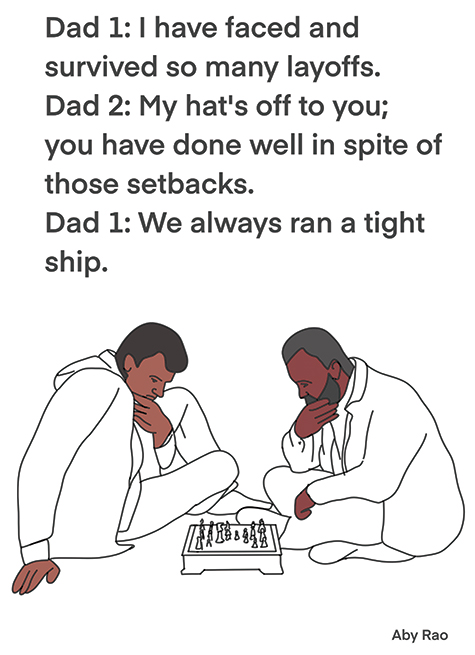
We usually do not pay much attention to debt; this is probably because in the backs of our minds, we think there is plenty of time to take care of matters. The bottom line is, that for many of us, some form of debt will still hang over our heads during retirement.
And then we face the situation of living with a very fixed source of income stream and an expense that grows at least by the inflation rate if not more.
The best scenario is that we have paid off all our debts before we retire. What kind of debts/loans am I talking about here? The most common ones are student loans that we started back in our college days or later but there are others. Credit card debts, home mortgages are quite common but there are car loans, medical loans and hopefully we did not have to go through any home and medical emergency that we were not expecting.
For a growing number of retirees, the golden years are awash in red ink. According to a recent survey by the Transamerica Center for Retirement Sudies, 4 in 10 retirees cite paying off debt as a current and urgent priority. Consequently, they have also found that one in seven bankruptcy filers are 65 or older. Needless to say, there is no room screw-up in retirement.
Declining income or fixed income with reduced buying power and rising medical expenses are the leading causes of older Americans’ financial distress. Ideally, we would enter retirement debt-free except for a low-interest rate mortgage. But life doesn’t deal such nice rolls of dice to everyone and some of us, if not most, face job loss, surprise medical bills or other unforeseen obstacles. Generally, savvy financial moves and strategic belt tightening can tame even the most fearsome debt loads and put us back in control of our destiny and perhaps golden years of retirement.
 First step is to take an inventory, yes inventory, of all the debts. We must know what kind of difficult mountain we need to climb. It will include all sources of debt, amounts owed, interest rates charged and repayment terms for sure and then there could be any special terms or conditions. These include, unloading without penalty larger amounts than our monthly premiums, and possibility of forgiveness or negotiations.
First step is to take an inventory, yes inventory, of all the debts. We must know what kind of difficult mountain we need to climb. It will include all sources of debt, amounts owed, interest rates charged and repayment terms for sure and then there could be any special terms or conditions. These include, unloading without penalty larger amounts than our monthly premiums, and possibility of forgiveness or negotiations.
With that chart in front of you, your job, or whoever is helping you, becomes easier. Higher interest loans, like credit card debt, raise their ugly head immediately. Many folks don’t even believe the outstanding balance on the card is a loan and at a very high interest rate too, generally compounding monthly. Currently the credit card interest rates are quite high, ranging about 17 – 18 percent and generally such debts are to be handled first. Many banks are willing to work with you to reduce or to forgive your balances and hence reduce the total loan. It is nice if they do that, but it should be noted that such forgiveness of loans shows up on your 1040 as additional income and you end up paying income tax on it at your usual tax rate. But that is still better than paying the whole amount. Credit card is a convenience and that is how everyone should look at it.
Medical debts could be the next item on your inventory list. They come suddenly and usually are a high number for which we do not have ready cash available. Many do not realize this, but it is possible to negotiate discounts or payment plans directly with the healthcare providers especially when you show that you are not able to pay the full amount. It is best if you take a friend with you, especially the one who knows the system and has done this before. Most medical organizations are more than willing to sit down with you and come up with a feasible plan.
Everyone has heard about transferring the balance to another bank card and not get charged interest on the balance for a while. One must qualify for such transfer and therein lies the rub. A certain amount of discipline needs to be shown to the bank that you will make the payments before they accept your balance. Generally, there is also a fee to transfer.
A growing number of retirees still have mortgage payments when they retire. According to the joint center for housing studies, more than 40 percent of homeowners age 65 and older had a mortgage in 2016; that is a large number and it, perhaps, went up during the pandemic. It is another matter if the mortgage rate is small and most of the payment goes towards the principal, but if these loans were taken some time ago that may not be the case. If you wish to carry the mortgage into the retirement then the mortgage payment becomes an expense item, just like rent would be, which needs to be balanced against the steady but fixed stream of income.
By now it is probably clear that the planning for debt-free retirement starts long before the actual retirement date, many years before the retirement. Plans have to be in place as to how to retire all the loans and or be acted upon; sometimes that prompts to go for a second job and/or some other avenue but using retirement money for paying off the debt is not one of them. Mental and disciplinary fortitude is needed. This is simply a variation of “tough love.”
Mo Vidwans is an independent, board certified financial planner. For details visit, vidwansfinancial.com, call 734-476-0579 or write to: mvfinancial@yahoo.com



